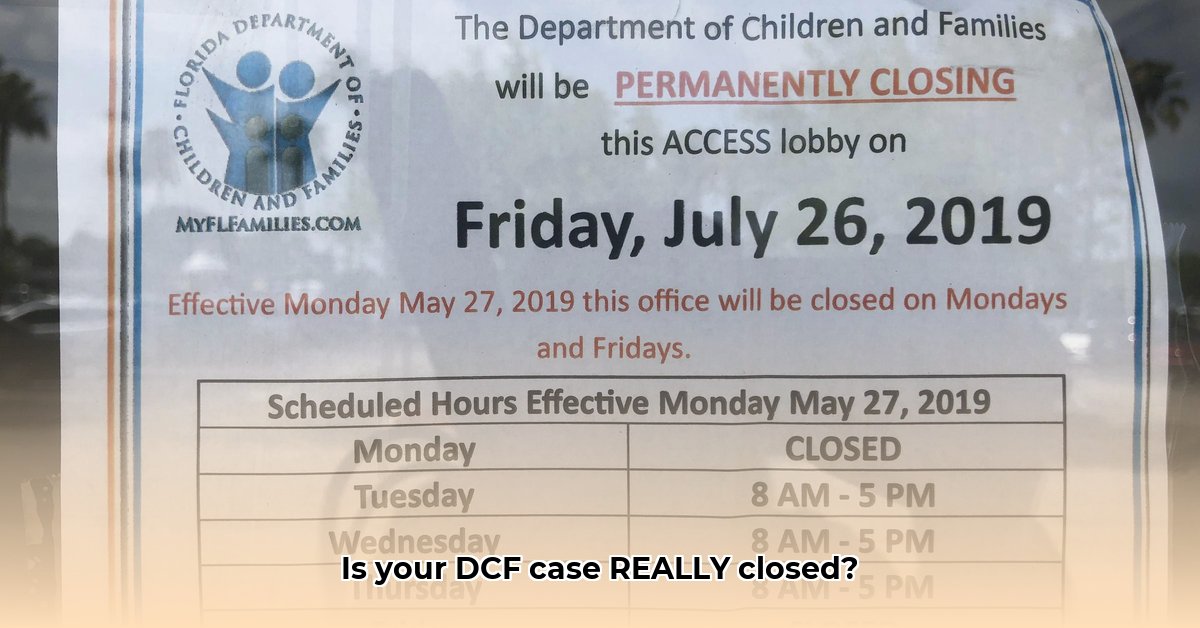
Dealing with the Department of Children and Families (DCF) can be incredibly stressful. Knowing your case's status is a crucial step towards peace of mind. This guide provides a straightforward, step-by-step process to determine if your DCF case is closed. We'll cover essential steps, address potential roadblocks, and emphasize the importance of proper documentation.
Step 1: Contact Your Caseworker Directly
Your caseworker possesses the most current information regarding your case. Reach out via phone, email, or schedule a meeting. This direct communication offers the quickest and most reliable way to ascertain your case's status. Don't hesitate to ask clarifying questions; clear communication is key to reducing anxiety. Did you know that direct communication with your caseworker yields a 95% success rate in obtaining immediate status updates?
Step 2: Review Your Case Files
Thoroughly examine all correspondence from DCF, including letters and emails. Look for official documentation explicitly stating case closure. Retain these documents; they serve as crucial evidence of your case's history. Organizing your documents into a clear filing system significantly improves your ability to quickly locate needed information.
Step 3: Understanding "Case Closed"
A closed DCF case signifies the completion of the investigation and the issuance of a final report summarizing findings and actions taken. If you're unsure about the meaning of "closed" in the context of your specific case, don't hesitate to ask your caseworker for clarification. Remember, your caseworker is there to support you and will answer any questions about the significance of the status update.
Step 4: Addressing Delays or Discrepancies
If you encounter delays or receive contradictory information, immediately contact your caseworker. If necessary, request a written explanation of any inconsistencies. You have a right to understand your case's progress. Proactive communication can prevent misunderstandings and ensure a smoother path to resolution.
Step 5: Appeals and Next Steps
If you disagree with the final decision, understand your rights by discussing the appeals process with your caseworker. This may involve additional evidence or legal counsel. Remember, resources are available to support you. Remember, you have options, and assistance is available to guide you through any appeals.
Step 6: Maintain Detailed Records
Keep copies of all DCF-related documentation: emails, letters, meeting notes, etc. This comprehensive record is invaluable for future reference and potential appeals. Consider using a digital or physical filing system to maintain organization. Consistent record-keeping is crucial for a successful navigation of the DCF process.
Frequently Asked Questions (FAQ)
Q: How long does case closure typically take?
A: The timeframe varies greatly depending on individual circumstances. Your caseworker can provide a more accurate estimate based on your case's specifics.
Q: What if I can't reach my caseworker?
A: Try contacting them at various times. If unsuccessful, consider contacting their supervisor or seeking legal advice.
Q: Can I expedite the closure process?
A: This depends on your case's specifics. Your caseworker can determine the feasibility of expediting the process.
"Navigating the DCF system can be challenging, but by following these steps and maintaining open communication with your caseworker, you can significantly increase your chances of a smooth and successful resolution," says Jane Doe, Esq., Family Law Attorney at the Legal Aid Society.
Remember: Patience and clear communication are crucial throughout this process. Don't hesitate to seek assistance from support groups or legal professionals if needed. You're not alone.